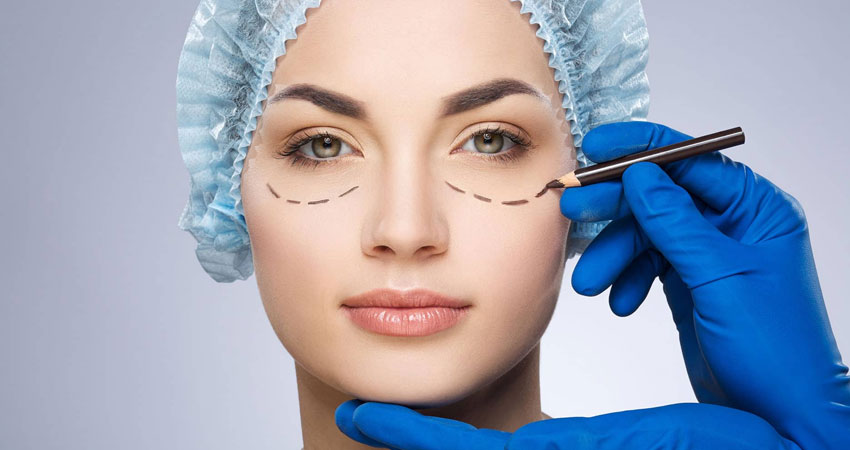
Blepharoplasty
People who have the familial problem of bags beneath the eyes may well undergo surgery in their 20’s. Ageing effects of the skin are apparent earlier in the eyelids than elsewhere. A reduction of the skin can be carried out from the age of 35. Patients with thyroid disease often develop eye signs which can be helped by surgery. The problem often seems worse in the morning particularly with prolonged stress and lack of sleep. Fluid that is normally distributed throughout the upright body during the day, tends at night to settle in areas where the skin is loose, such as the eyelids. Drooping of the eyelids is also an effect of the ageing process and aggravates the accumulation of the skin in the upper eyelids. Sometimes so much skin accumulates in the upper lids that it hangs over the eyelashes to obstruct vision.
The Operation
Both upper and lower eyelid surgery can be carried out under local anaesthesia or under general anaesthesia in a hospital. In a typical procedure the surgeon makes incisions following the natural lines of your eyelids; in the creases of upper lids and just below the lashes in the lower lids. These incisions are extended a little way into the crow’s feet or laughter lines at the corner of the eyes. Through this incision surplus fat is removed and excess skin and sagging muscle. Sometimes it is only necessary to reduce the skin, sometimes the skin and the fat and sometimes just the fat. In case of lower lid I do not remove the fat ,instead I redistribute it under the infra orbital sub-periosteal plane which gives better fullness and rejuvenated look rather than sunken eye look after removal of prolapsed orbital fat.
Limitations
It is important for you to understand that only the wrinkles which are in the skin will be removed. We are only treating the wrinkles within the bony margin of the orbit (eye sockets). Folds of skin extending on to the cheek (festoons) will not normally be improved. Wrinkles in the area of the crow’s feet will remain and although the skin is much tighter it is still necessary to be able to open and close the eyes freely. Descent of the eyebrow can be helped by endoscopic brow lift and an extension of this, the deep facelift, can be used to not only lift the eyebrow and the upper eyelid, but also lift and open the outer angle of the eye. Sometimes residual or recurrent wrinkles are suitable for treatment by chemical peeling or laser resurfacing. The operation has no effect at all on the dark color of the lower eyelid.
Risks
When eyelid surgery is performed by a qualified Plastic Surgeon complications are infrequent and usually minor. Occasionally some blood can collect under the skin after the operation has finished (haematoma) this usually disperses spontaneously over 2 or 3 weeks but it may need to be drained if it is large. Quite commonly the margin of the lower lid is slightly pulled away from the eye during the first day or two after surgery due to swelling. This will settle on its own or with the help of suture strips or steri-strips. Very occasionally another operation is necessary. Sometimes tiny white cysts can appear along the stitch line. They are nothing to be concerned about but can be pricked out with a needle.
After The Surgery
Following surgery it would be best to keep your head elevated for a few days to reduce swelling. Cold compresses can also help. The surgeon will normally apply some suture strips or steri-strips as support to the eyelids after surgery and if these become crusted they can be replaced. Cleaning the eyes with water is useful and the surgeon may advise the use of eye drops or ointment. The sutures are usually removed after 3 to 5 days and soon after you will be able to use make-up. Sometimes you will be advised to use the suture strips or steri-strips as support to the lower eyelids for a week or so. The closure of the eyes appears tight after surgery because of the swelling and because skin has been removed. If closure is not complete at night the patient should apply some eye ointment before going to sleep.
The eyes appear watery after surgery, partly because of swelling under the conjunctiva (chemosis) and partly because the tear ducts are swollen and do not drain as readily. This will last a few weeks. Although there is bruising it can quite readily be covered with make-up and dark glasses. The scars will be pink for a few months, but eventually they become almost invisible.
 WhatsApp
WhatsApp